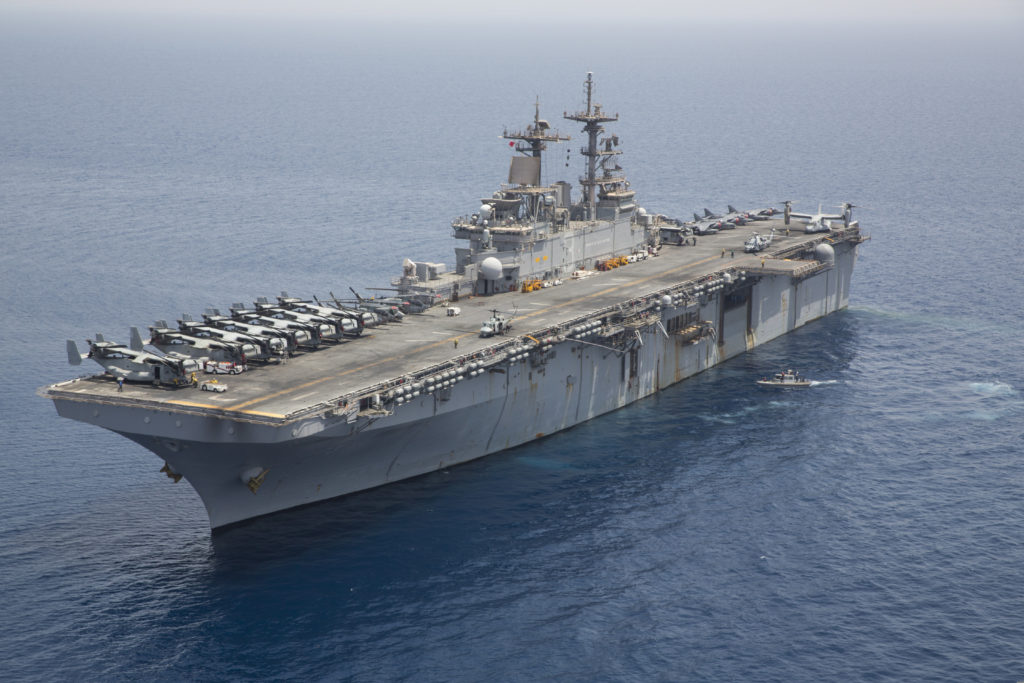Using the Maxial Scaffold Hoist on the USS Kearsarge
Getting more work done with the same work force is obviously an attractive concept. If you can produce more without increasing labor overhead or having to find and train new people, profits will likely increase. In the scaffold industry, the amount of work companies can take on is often limited by what they can handle with their workforce. In order to take on more work they generally have to hire additional experienced workers (if they can find them) or train up more people.
2016 – Empire Scaffolding Services (a division of Técnico Corporation) was recently faced with the dilemma of having the opportunity for more work than they were able to handle with their current crew.
Empire is primarily a ship repair and service company based in Virginia Beach that does a lot of work in US Navy Shipyards. They were contracted to build the scaffolding around 2 enormous masts on the USS Kearsarge (LHD-3) which is the second largest class of ship in the U.S. Navy. Their job was to stage the masts from the 108 ft. above the water line to around 245 ft. with work platforms every 6’ 6” to allow the Navy to repair and replace antennas and perform other required maintenance.
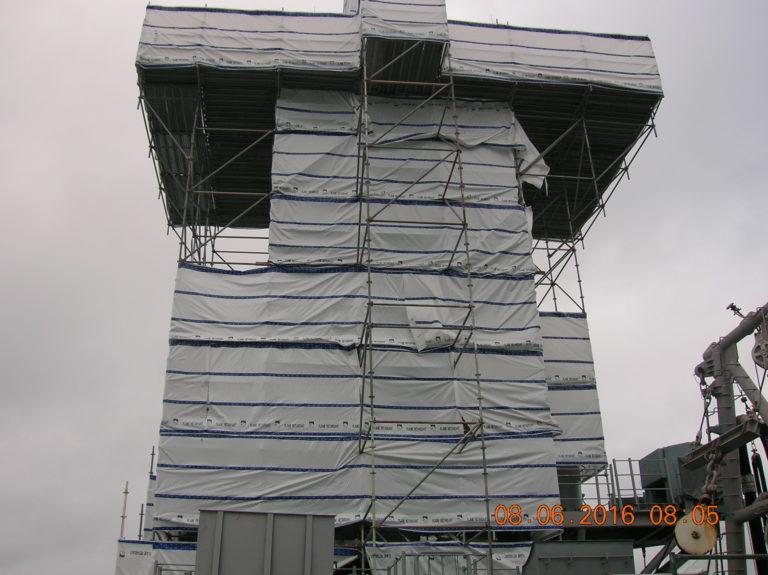
While in the middle of the Kearsarge job, Empire was approached with a great opportunity to take on new work but with a crew of only about 15 experienced scaffolders, they were maxed out. Each mast on the ship typically required 12-14 workers (their whole crew). Without the time it would take to train new people and unable to find experienced workers on short notice, Empire looked for an alternative solution.
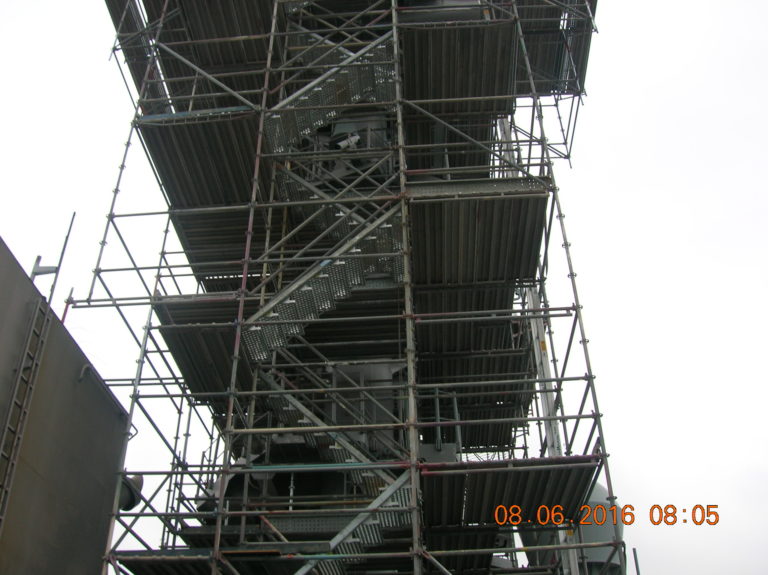
That solution turned out to be BETA MAX’s Maxial Track Hoist which is specifically designed for scaffold E&D work. It runs at 80 ft per minute on a track that builds along with the scaffold, and is equipped with baskets to accommodate system and frame scaffold or general materials. They were able to rent the hoists they needed from LGH, which stocks them nationwide for rent or purchase.
Empire’s division manager Jim Shea stated that “By using the Maxial, we were able to stage the masts with 5 or 6 guys instead of the 12-14 guys that we would normally have to use in a daisy chain to pass materials up and down. It helped us with our manpower tremendously”
Ordinarily it would take basically their entire scaffolding crew to build the scaffolding around the masts on the ship but because they were using the Maxial Hoist they were able to utilize many of their workers elsewhere. As Jim explained, “We were approached by another shipyard company that gets a lot of work and they wanted to hire us to do some of their work…because of the Maxial we were able to take on that new work… We were able to look for more work because we didn’t have to use all of our guys to stage the masts.” By utilizing the Maxial hoists they were able to take on the additional work and complete the mast work on the USS Kearsarge at the same time with their existing crew.
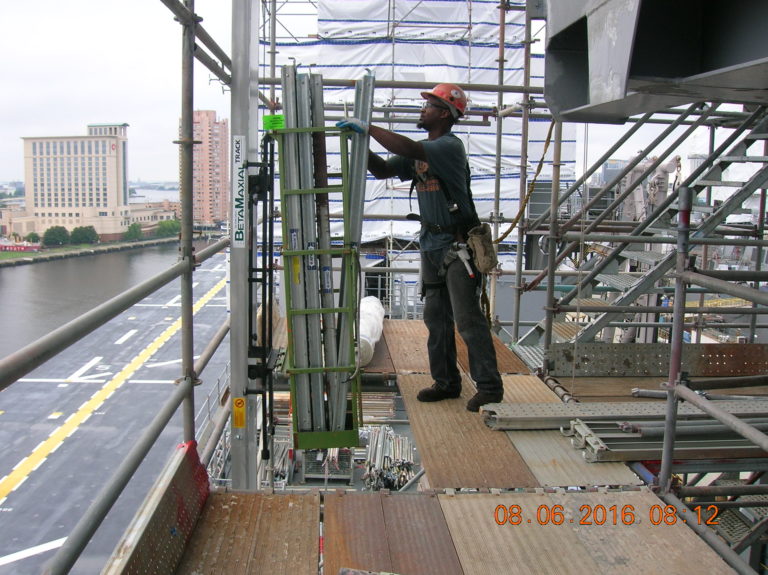
Another benefit that Empire appreciated was the increased jobsite safety when the material delivery is handled by a hoist. One of the biggest safety hazards when working at height is the risk of dropped material that is being passed up and down in a man-line. By using the Maxial hoist this risk is significantly reduced because there is no longer a daisy chain of workers handling all the material.
“We were able to reduce the risk of injury from materials being dropped in the daisy chain and that is a big deal when working in Navy shipyards. The Maxial allowed us to get materials to the top in a safe manner”
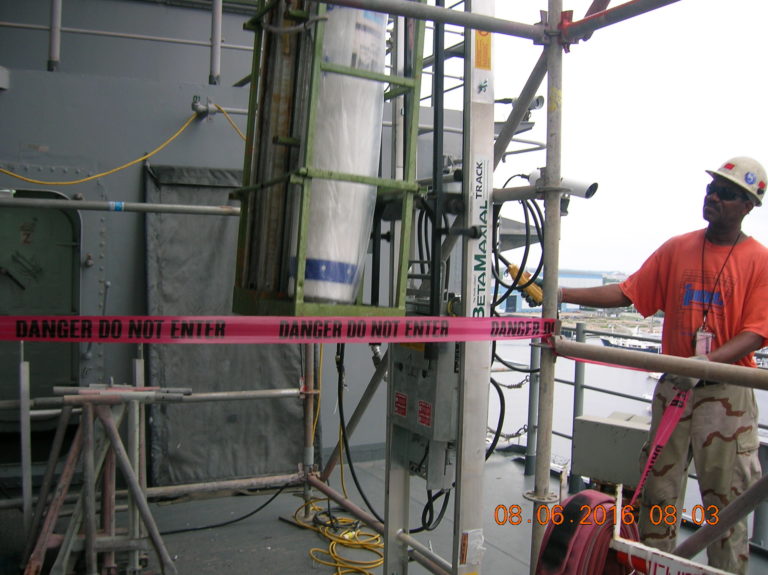
Maxial Track Scaffold Hoists have become a game changer in the field of scaffold E&D. The Maxial hoist runs on a track that builds as you go, so when you add another deck of scaffold you add another track section for the hoist. The Maxial delivers scaffolding materials at 80 ft. per minute and only requires a couple workers loading at the bottom and a couple more unloading at the top so it is a more efficient way to move materials. This frees up workers that can be utilized elsewhere instead of just passing materials up and down all day. See more at https://www.betamaxhoist.com/maxial/.
